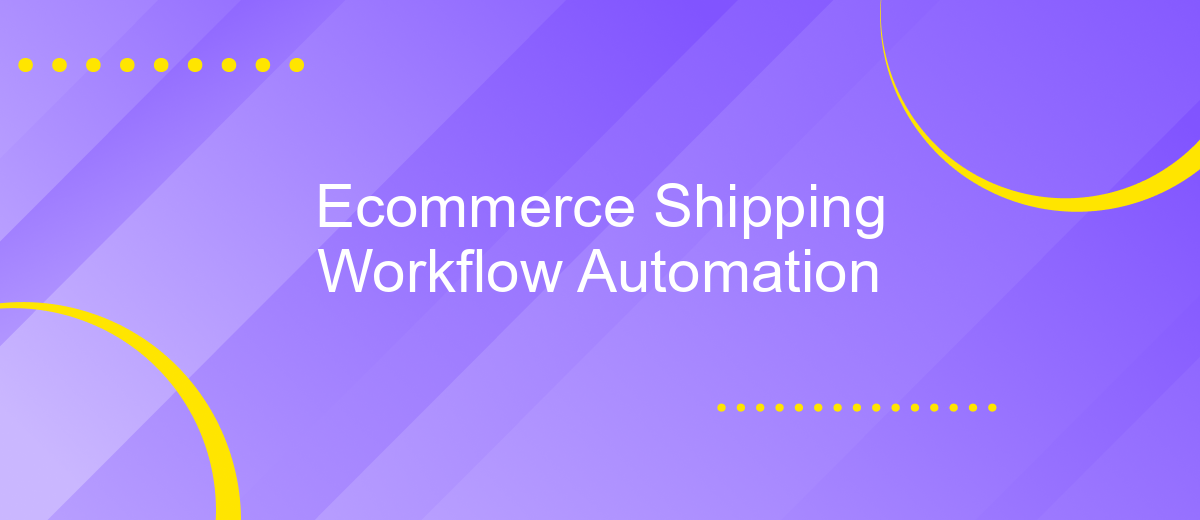Ecommerce Shipping Workflow Automation
In the fast-paced world of ecommerce, efficient shipping processes are crucial for maintaining customer satisfaction and competitive edge. Ecommerce shipping workflow automation streamlines operations, reduces human error, and accelerates delivery times. This article explores the benefits, tools, and strategies for automating your shipping workflow, helping you to enhance productivity and improve overall business performance.
Workflow Overview
In the dynamic world of ecommerce, automating the shipping workflow is crucial for efficiency and customer satisfaction. A streamlined process ensures that orders are processed, packed, and shipped accurately and promptly. This involves integrating various systems to handle order management, inventory control, and shipping logistics seamlessly.
- Order Management System (OMS) integration
- Real-time inventory tracking
- Automated shipping label generation
- Carrier selection and rate comparison
- Customer notifications and tracking updates
Using tools like ApiX-Drive can significantly simplify these integrations. ApiX-Drive allows businesses to connect their ecommerce platforms with various shipping carriers and logistics services without needing extensive technical expertise. By automating these workflows, businesses can reduce manual errors, save time, and improve the overall customer experience.
Benefits of Automation

Automation in ecommerce shipping workflows offers numerous advantages, significantly enhancing efficiency and accuracy. By automating routine tasks such as order processing, inventory management, and shipping label generation, businesses can reduce human error and save valuable time. This streamlined approach allows companies to focus on more strategic activities, such as improving customer service and expanding their product range, ultimately leading to increased customer satisfaction and business growth.
Moreover, integrating automation tools like ApiX-Drive can further optimize the shipping process. ApiX-Drive enables seamless integration between various ecommerce platforms and shipping carriers, ensuring real-time data synchronization and smooth operations. This not only simplifies the management of multiple sales channels but also provides valuable insights through analytics, helping businesses make informed decisions. As a result, automation not only boosts operational efficiency but also enhances scalability, allowing ecommerce businesses to adapt and thrive in a competitive market.
Key Considerations

When automating your ecommerce shipping workflow, it is crucial to consider several key factors to ensure a seamless and efficient process. These considerations will not only streamline your operations but also enhance customer satisfaction.
- Integration Capabilities: Ensure that your automation tools can easily integrate with your existing ecommerce platform, inventory management system, and shipping carriers. Services like ApiX-Drive can facilitate these integrations, allowing for a smooth data flow between systems.
- Scalability: Choose solutions that can scale with your business growth. As your order volume increases, your automation tools should be able to handle the additional load without compromising performance.
- Customization: Look for automation tools that offer customizable workflows to match your unique business processes. This flexibility will enable you to tailor the shipping process to meet specific requirements.
- Cost Efficiency: Evaluate the cost implications of implementing shipping automation. While upfront costs may be significant, the long-term savings in time and labor can justify the investment.
- Customer Experience: Consider how the automation will impact your customers. Features like real-time tracking and timely notifications can significantly improve the customer experience and build trust.
By carefully evaluating these key considerations, you can implement an effective ecommerce shipping workflow automation that enhances operational efficiency and customer satisfaction. Leveraging services like ApiX-Drive can further simplify the integration process, ensuring a seamless transition to automated workflows.
Best Practices

Implementing best practices in ecommerce shipping workflow automation can significantly enhance efficiency and customer satisfaction. Start by thoroughly analyzing your current shipping processes to identify bottlenecks and areas for improvement. Utilize automation tools to streamline repetitive tasks, such as order processing and tracking updates.
Integrating various platforms and systems is crucial for a seamless workflow. Services like ApiX-Drive can help you connect your ecommerce platform with shipping carriers, inventory management systems, and customer relationship management (CRM) tools. This ensures real-time data synchronization and reduces manual errors.
- Automate order confirmation and shipping notifications to keep customers informed.
- Use rule-based automation to select the most cost-effective shipping options.
- Regularly update and test your automation workflows to adapt to changing business needs.
- Monitor performance metrics to identify areas for further optimization.
By following these best practices, you can create a more efficient and reliable shipping process. This not only reduces operational costs but also enhances customer satisfaction, leading to increased loyalty and repeat business.
Trends and Future of Automation
Automation in ecommerce shipping is rapidly evolving, driven by advancements in technology and changing consumer expectations. Businesses are increasingly adopting AI-powered tools and machine learning algorithms to optimize their shipping processes. These technologies enable real-time tracking, predictive analytics, and personalized customer experiences, making shipping faster, more reliable, and cost-effective. Additionally, the integration of Internet of Things (IoT) devices into the supply chain is enhancing visibility and efficiency, allowing for better inventory management and reduced operational costs.
Looking ahead, the future of ecommerce shipping automation lies in further integration and collaboration between various systems and platforms. Services like ApiX-Drive are at the forefront, offering seamless integration solutions that connect different software and automate workflows without the need for extensive coding knowledge. This streamlines operations and allows businesses to scale more efficiently. As automation technologies continue to advance, we can expect even more sophisticated solutions that will further enhance the speed, accuracy, and sustainability of ecommerce shipping.


FAQ
What is Ecommerce Shipping Workflow Automation?
How can I integrate my ecommerce platform with shipping carriers?
What are the benefits of automating my shipping workflow?
How difficult is it to set up shipping automation?
Can I customize the automation workflows to fit my business needs?
Routine tasks take a lot of time from employees? Do they burn out, do not have enough working day for the main duties and important things? Do you understand that the only way out of this situation in modern realities is automation? Try Apix-Drive for free and make sure that the online connector in 5 minutes of setting up integration will remove a significant part of the routine from your life and free up time for you and your employees.

